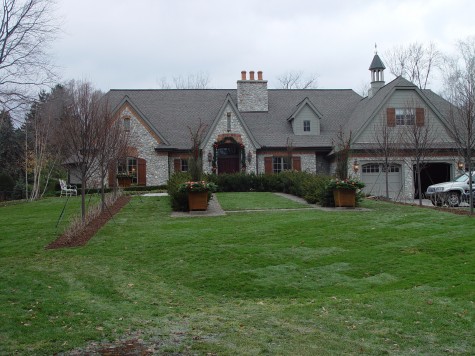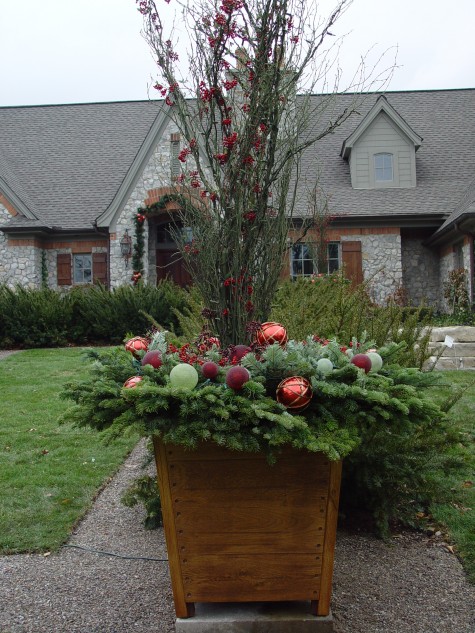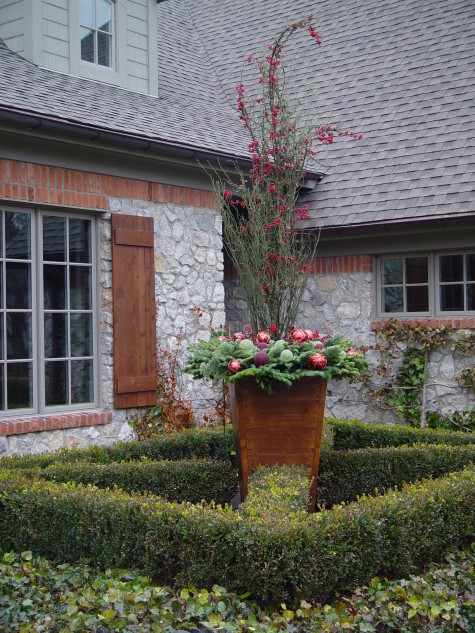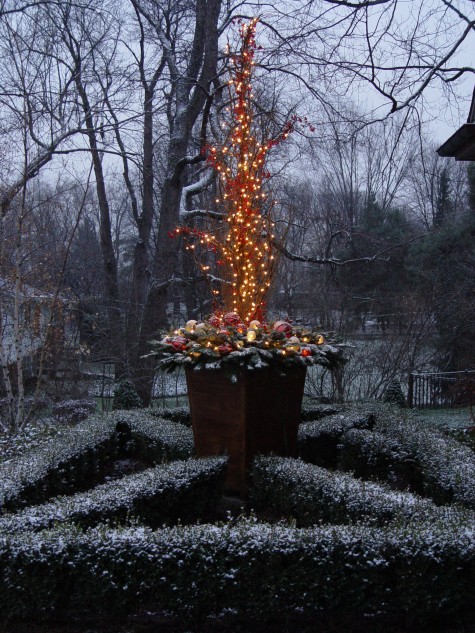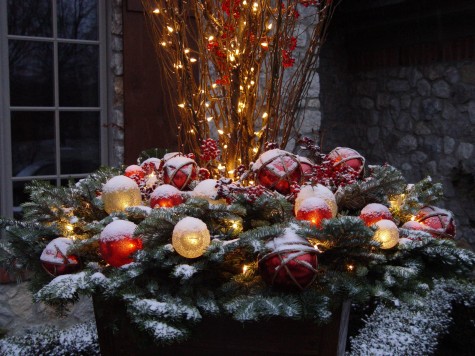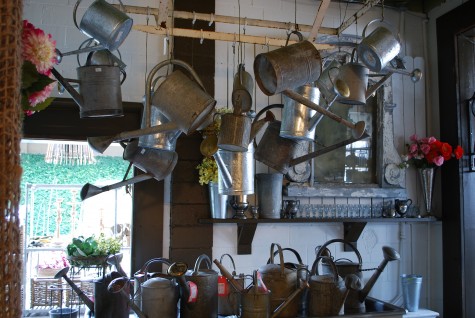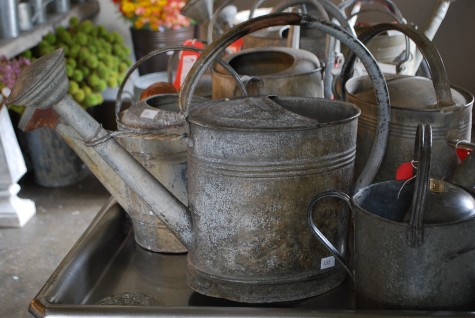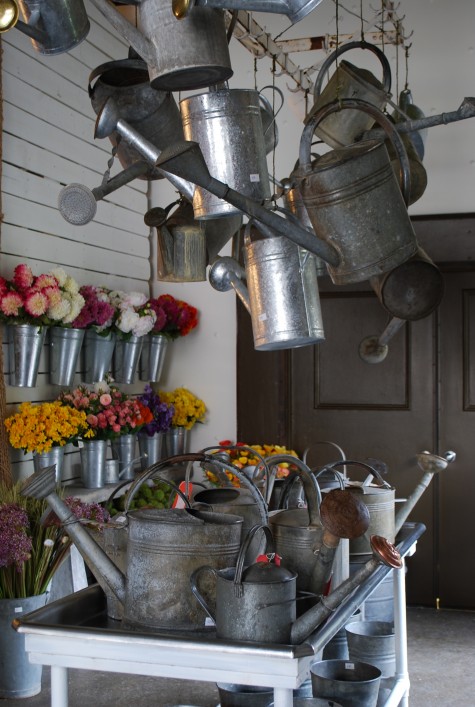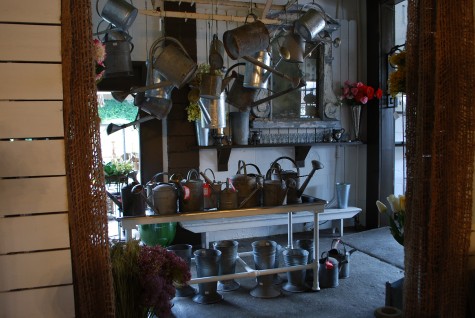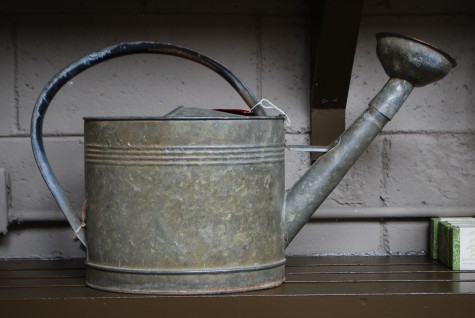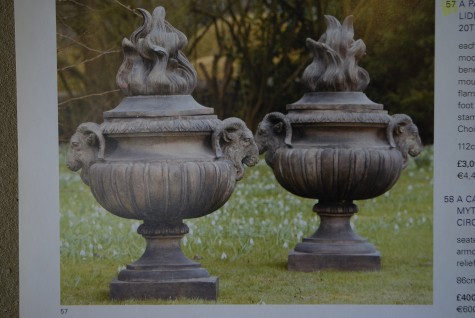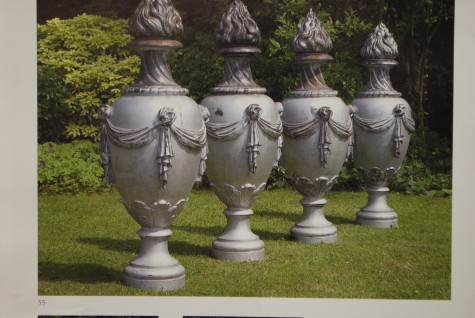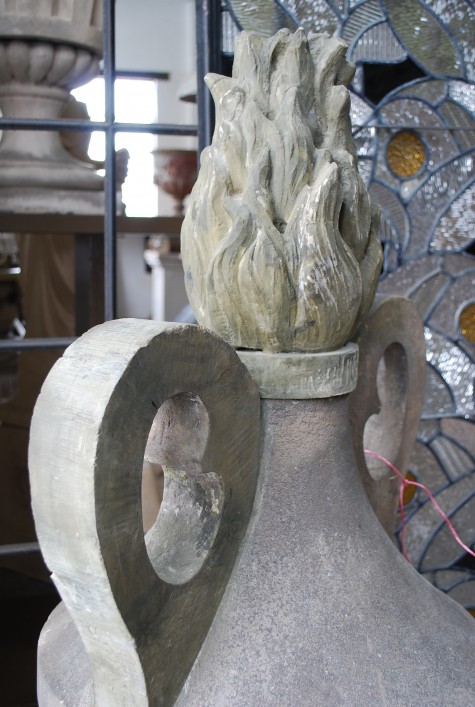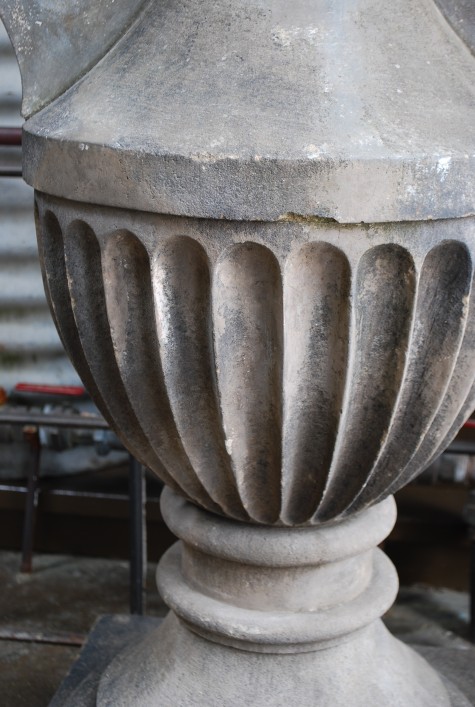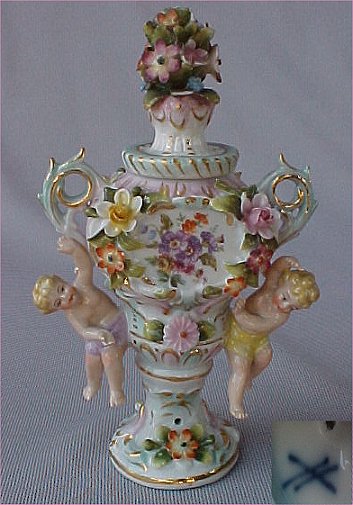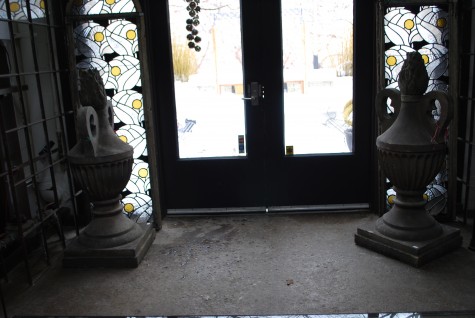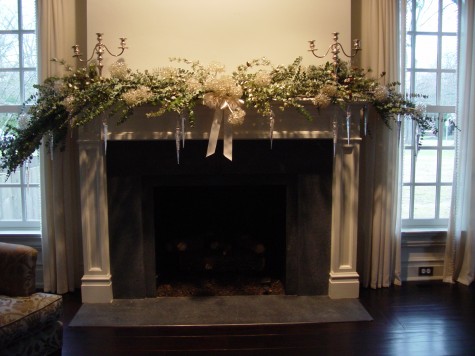 I have no idea where the tradition of decorating a mantel for the holidays came from. Perhaps people gathering at a cold time around a roaring fireplace made the fireplace mantle visually important. Everyone knows the chimney is Santa’s portal-why not make it festive? I do know that the fireplace mantel is an ideal place for collections of all kinds. Small objects that need an elevated shelf to be seen, objects of personal or family importance-a mantel can be home to all manner of objects that please, or represent a point of view. My mantel at home changes whenever the mood strikes me. There are times when it is empty, and times when it is piled high. But however you treat your mantel at the holidays-formally or traditionally, as in this mantel-there are construction issues.
I have no idea where the tradition of decorating a mantel for the holidays came from. Perhaps people gathering at a cold time around a roaring fireplace made the fireplace mantle visually important. Everyone knows the chimney is Santa’s portal-why not make it festive? I do know that the fireplace mantel is an ideal place for collections of all kinds. Small objects that need an elevated shelf to be seen, objects of personal or family importance-a mantel can be home to all manner of objects that please, or represent a point of view. My mantel at home changes whenever the mood strikes me. There are times when it is empty, and times when it is piled high. But however you treat your mantel at the holidays-formally or traditionally, as in this mantel-there are construction issues.
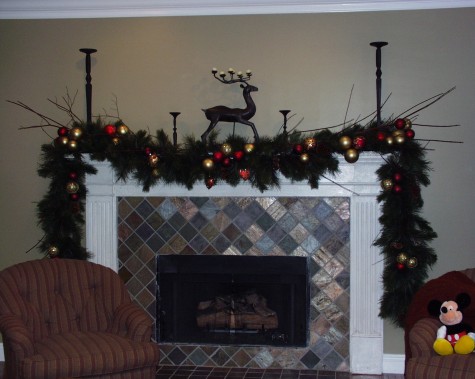 A mantel is a very long, and very shallow space. It is but one shelf-there are no changes of level built in. A holiday garland whether fresh or faux weighs plenty. How to keep it on the mantle and off the floor comes first. In this case, four very heavy bronze candlesticks provide an anchor for the garland. Not interested in candlesticks on your mantle? Drive a series of small brads into the wood mantle surface near the wall, or in the wall. Appalled at the idea of driving nails? Lead weights, or bricks can anchor your display, and be invisible.
A mantel is a very long, and very shallow space. It is but one shelf-there are no changes of level built in. A holiday garland whether fresh or faux weighs plenty. How to keep it on the mantle and off the floor comes first. In this case, four very heavy bronze candlesticks provide an anchor for the garland. Not interested in candlesticks on your mantle? Drive a series of small brads into the wood mantle surface near the wall, or in the wall. Appalled at the idea of driving nails? Lead weights, or bricks can anchor your display, and be invisible.
 Sometimes a holiday mantel calls for a holiday expression on the wall above it. I find I focus much more on the white rectangular space above a mantel, than the mantel surface itself. If there is a print, painting or mirror above that mantel, perhaps it could be included in the mantel treatment. These clients have a considerable collection of native American art-the magnolia and pussy willow holiday medallion was designed and fabricated in that vein.
Sometimes a holiday mantel calls for a holiday expression on the wall above it. I find I focus much more on the white rectangular space above a mantel, than the mantel surface itself. If there is a print, painting or mirror above that mantel, perhaps it could be included in the mantel treatment. These clients have a considerable collection of native American art-the magnolia and pussy willow holiday medallion was designed and fabricated in that vein.

The designer Ann Heath, whom I greatly admire, told me just a few weeks ago that she likes holiday decor on the mantel that does not trail to the floor. A horizontal expression-only. I have this idea under consideration. This holiday mantel treatment is very formal and low key-much like the room. I did the mantel surface only-no trailers. The picks and pieces are secured to the mantel via 3 coulter pine cones. Coulter pine cones, the largest, and most certainly the heaviest of any pine cone on this planet, are the ballast for this display. Faux white pine picks take easily to cut stems of German boxwood. Bark ornaments and pearl ball clusters weigh next to nothing-the stiff bristles of the white pine help hold some elements aloft. My recommendation for mantel decor-build up to some height. Come out away from the wall. A mantel decoration may be long and thin, but it should be as three dimensional as you can manage.
 Pine cones look like they belong on the mantel. They are just one of many of nature’s beautiful objects, but they shine in the winter months. I collect them from the park next door; I buy them from Oregon, California, and North Carolina. Their shapes are beautiful-no matter the evergreen from whence they came. The story and the science of the production of cones-astonishing. The science aside,what gardener does not recognize them as naturally beautiful objects asking for a holiday home. The more, the better.
Pine cones look like they belong on the mantel. They are just one of many of nature’s beautiful objects, but they shine in the winter months. I collect them from the park next door; I buy them from Oregon, California, and North Carolina. Their shapes are beautiful-no matter the evergreen from whence they came. The story and the science of the production of cones-astonishing. The science aside,what gardener does not recognize them as naturally beautiful objects asking for a holiday home. The more, the better.
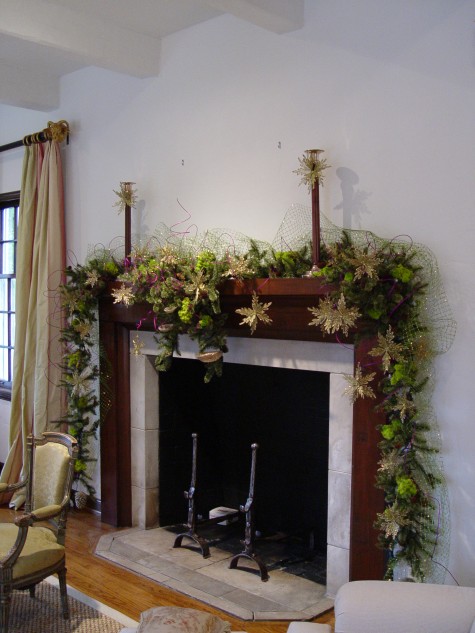 I have in my mind’s eye a mantel overflowing with cones, seed pods, fresh greens, grapevine, bird’s nests just collected once the leaves fell, rose hips, grasses, twigs, bracket fungus-the mantel that is the forest floor. But there are those who have a different point of view. Lime green glitter net, lime moss, purple anodized wire-stars from gold wire wesh-this mantel is a smart and sassy holiday dress all my client’s own. She chose the materials. From what I know of her, she has a holiday mantel distinctively all her own. I admire the effort anyone takes to express themselves.
I have in my mind’s eye a mantel overflowing with cones, seed pods, fresh greens, grapevine, bird’s nests just collected once the leaves fell, rose hips, grasses, twigs, bracket fungus-the mantel that is the forest floor. But there are those who have a different point of view. Lime green glitter net, lime moss, purple anodized wire-stars from gold wire wesh-this mantel is a smart and sassy holiday dress all my client’s own. She chose the materials. From what I know of her, she has a holiday mantel distinctively all her own. I admire the effort anyone takes to express themselves.
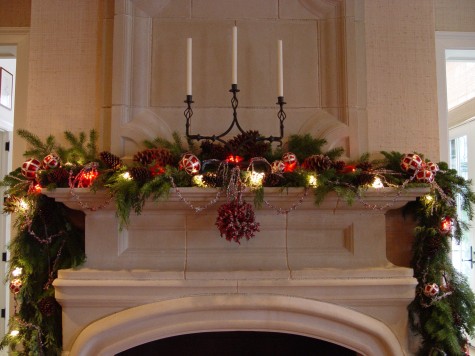 Not everyone has a limestone mantel and fireplace surround. But everyone has a home and hearth worth celebrating. Get dressed-it’s the holidays.
Not everyone has a limestone mantel and fireplace surround. But everyone has a home and hearth worth celebrating. Get dressed-it’s the holidays.
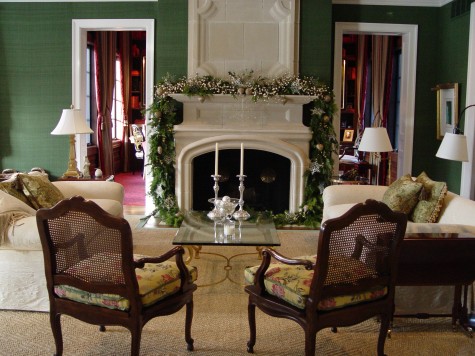
No matter how or how much or why you garden, you have something to say all your own. The holidays are inviting you to speak your peace. I will be lucky to get the house decorated before Buck and I celebrate our Christmas on Christmas Eve. But I will give what I have to see that we are ready. The mantle-what I will do do this year, I have no idea. No matter-I am looking forward to it.
